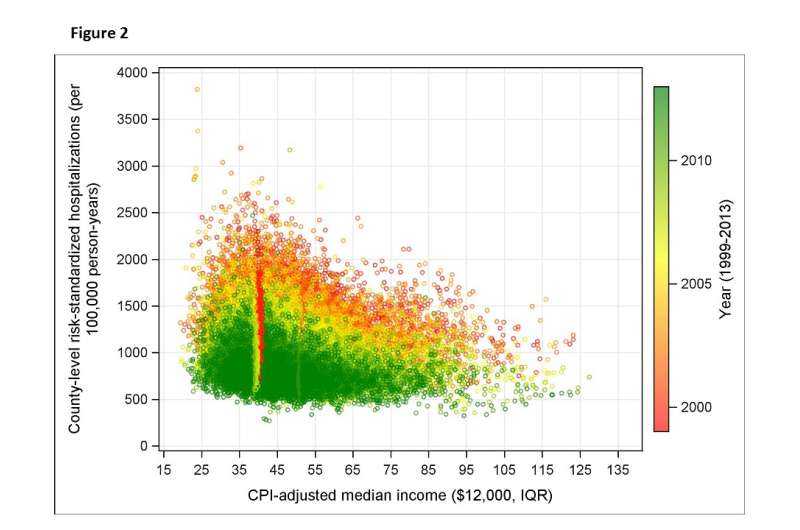Heart attacks trending down, but low-income communities still lagging behind

While heart attack rates across all income levels have declined significantly over the last 15 years, people living in low-income communities are still more likely to be hospitalized for acute myocardial infarction (AMI), according to a new study published by Yale School of Medicine researchers in the journal JAMA Cardiology.
"Lower income equals higher heart attack hospitalizations," said first author Erica Spatz, M.D., assistant professor of medicine at Yale School of Medicine. "The rate of decline for heart attacks is similar regardless of economic status. But lower income communities with historically higher rates of heart attack hospitalizations still have not caught up. In fact, they lag four years behind wealthier communities."
Spatz and her co-authors, including Yale College senior Adam Beckman, studied heart attack rates among Medicare beneficiaries. The team calculated hospitalization and mortality rates for each year from 1999 to 2013, and looked at the slope of these trends. They investigated whether the nationwide declines in heart attack rates were seen in all income groups and, if so, whether the rates of AMI decreased at the same pace. The team used U.S. census data to stratify the counties into three income groups—high, average, and low.
"We thought that in low-income communities, in which there are often limited opportunities to maintain a healthy lifestyle, poor access to preventive healthcare and high stress levels linked to high unemployment and poverty, hospitalization rates and mortality from heart attacks, would be higher than in average and high income communities," said Spatz, who is also a clinical investigator at the Yale Center for Outcomes Research & Evaluation (CORE). "Interestingly, heart attack rates were higher, but death rates in the year following heart attack were similar."
"Our results suggest a need for targeted approaches to reduce incidents of heart attacks among low-income communities," Spatz added.
"These analyses help to spotlight communities lagging behind in heart attack prevention and care," said Beckman. "And this insight is critical for promoting community environments that support healthier ways of living."
More information: JAMA Cardiology, DOI: 10.1001/jamacardio.2016.0382



















